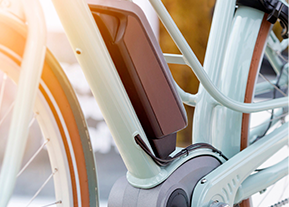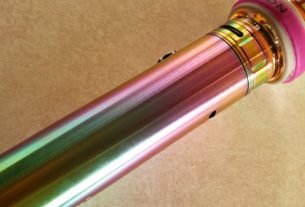**** HEALTH Canada Release
Carbon monoxide poisoning awareness
Symptoms of carbon monoxide poisoning
Carbon monoxide can cause health problems before you even notice that it’s present. Breathing it in reduces your body’s ability to carry oxygen in your blood. Exposure to the gas can cause carbon monoxide poisoning (CO poisoning) and can be dangerous to your health.
At low levels, effects include flu-like symptoms, such as:
- tiredness
- headaches
- shortness of breath
- impaired motor functions, such as:
- muscle weakness
- partial or total loss of function of a body part (limb or limbs)
At high levels, or if you are exposed to low levels for long periods of time, you can experience:
- dizziness
- chest pain
- poor vision
- difficulty thinking
At very high levels, it can cause:
- convulsions
- coma
- death
Preventing carbon monoxide poisoning
Keep your home and cottage air clean and free of carbon monoxide by:
- preventing indoor smoking
- keeping the door between your house and the garage closed
- not idling vehicles in the garage, even when the garage door is open
Never use:
- gas-powered machines in the garage, such as:
- trimmers
- generators
- lawnmowers
- snowblowers
- a barbecue or portable fuel-burning camping equipment inside a:
- home
- garage
- vehicle
- camper
- tent
- kerosene or oil space heaters and lamps in enclosed areas unless they’re specifically designed for indoor use
Regular appliance maintenance and inspections
You can help prevent carbon monoxide with good maintenance of fuel-burning appliances.
Make sure appliances are well maintained and inspected by a professional at least once a year. This includes:
- furnaces
- fireplaces
- gas stoves
- water heaters
Home owners should regularly examine propane and natural gas powered appliances, such as:
- stoves
- heaters
- refrigerators
They should be checking for:
- leaks
- cracks
- blocked vents
- improper installations
- poor connections of gas lines to:
- appliances
- vents
- breaks or tears in connection tubes
- corroded or disconnected venting pipes
Inspect exhaust vents during and after a snowstorm to make sure they are not covered with snow. Do this for your:
- dryer
- furnace
- fireplace and chimney
- heat recovery ventilator
- wood-burning or gas stove
Carbon monoxide alarms
Carbon monoxide (CO) can only be detected with a carbon monoxide alarm. You should have at least one CO alarm installed in your home, in addition to a smoke alarm. Smoke alarms alert you to fires, not carbon monoxide. CO alarms can be purchased at any hardware or home equipment store.
Certification marks
When buying CO alarms at stores or online, it is important to look for products that are certified for use in Canada.
The certification marks must be to Canadian safety standards.
CO alarms with a Canadian certification mark have been tested by laboratory professionals. The mark indicates that the product meets the requirements of Canadian safety standards.
Certification marks must be found on:
- the CO alarm, and
- the product packaging.
Here are some common Canadian certification marks you may find on CO alarms and their packaging:
For products sold online, the product description may also indicate if the CO alarm is certified to Canadian safety standards. If you are not sure, ask the seller. If the seller cannot confirm that the product is certified to Canadian safety standards and bears a Canadian certification mark, don’t take the risk, only purchase products that have this required information.
Find out more about buying consumer products online.
Install carbon monoxide alarms correctly
The most important place to install a CO alarm is in hallways, outside of sleeping areas. It will have an audible alarm to warn you of high carbon monoxide levels in your home.
Make sure to follow the manufacturer’s suggestions for:
- installation
- testing
- use
- replacement
Test carbon monoxide alarms regularly
Test your CO alarms regularly. Replace batteries and the alarm itself as recommended by the manufacturer. Write on the battery or device to remind yourself when it was installed and when it should be replaced.
Contact your municipal or provincial government office for more information on the use and installation of carbon monoxide alarms in your area. Your local fire department may also be able to assist you.
If your carbon monoxide alarm sounds
If your carbon monoxide alarm sounds, you should do the following.
- do not try to locate the source of carbon monoxide
- leave your home immediately and move to fresh air
- once outside, call 9-1-1, your fire department or emergency services
- return to your home only after the problem has been fixed by a professional
About carbon monoxide
Carbon monoxide (also known as CO) is a gas that causes illness and can lead to death. It has no:
- smell
- taste
- colour
The gas is made whenever you burn fuel like:
- oil
- coal
- wood
- gasoline
- propane
- natural gas
It’s also contained in second-hand smoke.
Carbon monoxide can be present in your home or cottage at any time of the year. However, the risk is greater in winter months because homes in Canada are usually heated by:
- furnaces
- wood stoves
- water heaters or boilers
- other appliances that run on fuels
These devices can release carbon monoxide into your home if they are not installed correctly, or if they malfunction.
Other sources of carbon monoxide include:
- generators
- charcoal grills
- vehicle exhaust
- cooking appliances
- blocked chimney flues
These devices become a risk when they are used in unventilated areas, such as a:
- home
- garage
- cottage
- camper
- tent




